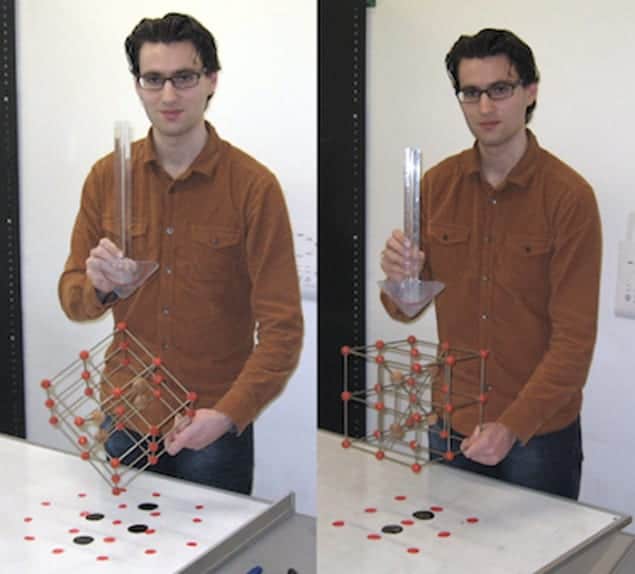
Researchers in the Netherlands have used electron tomography to obtain images of nanocrystal superlattices. This new use of an established imaging technique looks set to provide researchers with important 3D structural information about these technologically important materials.
Often called artificial solids, nanocrystal superlattices can be engineered to have a range of electronic, photonic and other desirable physical properties that could have technological applications. However, researchers still lack the right tools to image the 3D structures of these materials properly. Without such detailed information, the fundamental physical properties of these materials cannot be completely understood.
Now, a team from Utrecht University has used electron tomography to fully resolve the structure of a new nanocrystal solid, [PbSe]6[CdSe]19. The technique involves rotating the sample while obtaining 2D images in a transmission electron microscope (TEM). In this way, a series of 2D transmission images of the nanocrystals are obtained under different angles.
Reconstructed 3D image
“By projecting this transmission information along the angle under which it was obtained, we can reconstruct the 3D object from the initial 2D image data,” explains team member Mark Boneschanscher. “The technique provides us with a 3D image containing the detail we require and we can then use computer-assisted image analysis to extract the lattice coordinates of the nanocrystals within this 3D image.”
Electron tomography can provide information normally not accessible with a conventional TEM, which only produces a 2D transmission image of an object. This means that information about the third dimension (or that along the Z-axis of the TEM’s electron beam) is completely lost. Electron tomography, on the other hand, allows for full 3D characterization, Boneschanscher explained.
Local defects
“Using this 3D information, we can observe local defects in the nanocrystal structures – even if these cannot be observed in the conventional TEM images,” he adds. “Indeed, we were able to show that three totally different TEM images originated from one and the same crystal structure: a transmission image of the crystal along the c-axis; a transmission image from a crystallite with a planar defect; and a transmission image of a crystallite grown with the c-axis at an angle of 43° with respect to the TEM grid.”
The team says that electron tomography and computer-assisted image analysis could set a new precedent for studying nanocrystals and superlattices. The researchers now plan to undertake a more quantitative in-depth study of their nanocrystal solids to understand better how quantum-mechanical coupling between nanocrystals and defects affects the opto-electrical properties of these materials.
“With electron tomography as a tool to fully resolve the structure of these superlattices at our disposal, we will now be able to understand the link between structure and opto-electrical properties in much more detail,” says Boneschanscher. “We are currently measuring the local electronic properties of other nanocrystal solids using scanning-tunnelling microscopy, and know that some of our colleagues are trying to connect leads to these materials with the aim of making real devices out of them.”
More details of the work can be found in Nano Letters.



